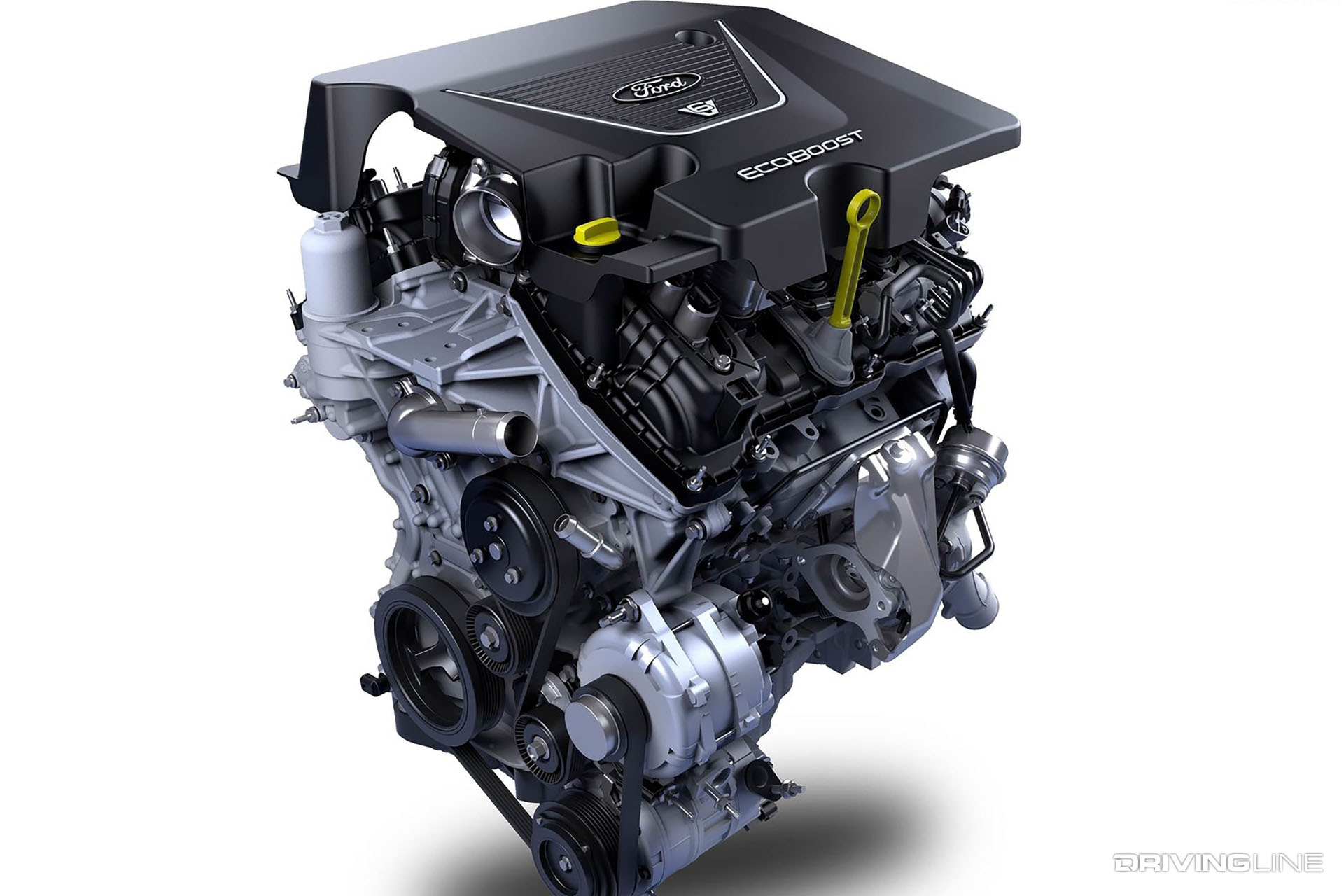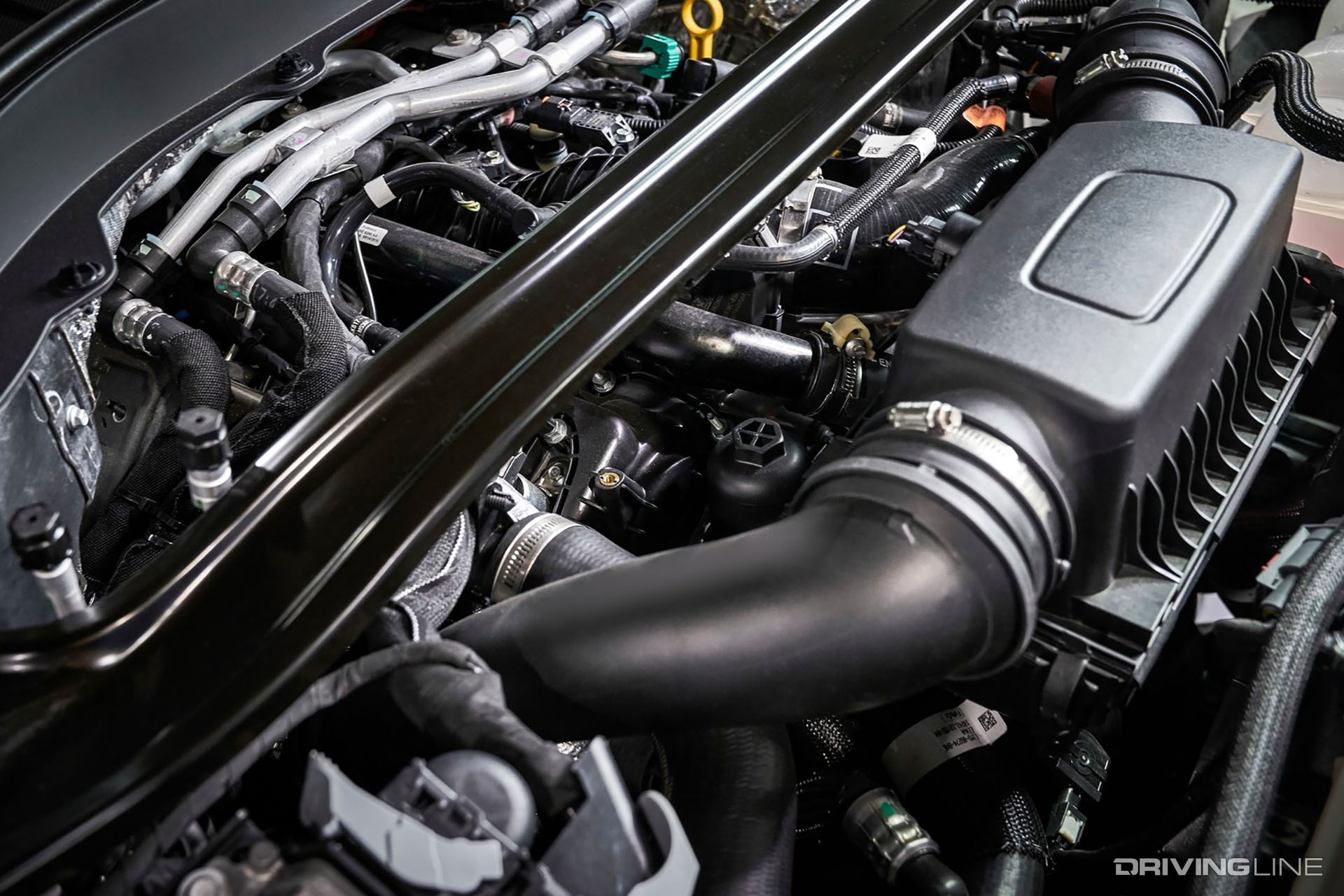Earlier this month we took a look back at Ford’s line of EcoBoost turbocharged three and four cylinder engines that power everything from fuel-sipping Fiestas to the vast majority of Mustangs that are sold today, but that represents just one part of the EcoBoost family.
Now it’s time to conclude our EcoBoost 10-year anniversary special with an overview of the V6 EcoBoost engines that can be found in countless fullsize pickups, SUVs, sedans and even the Ford GT Supercar.
2.7L EcoBoost V6
Starting at the smaller displacement levels and working up, we begin with the 2.7L twin turbocharged “Nano” EcoBoost V6 that first debuted in the F-150 pickup back in 2015. Depending on its specific application, the 2.7L EcoBoost engine makes as much as 335hp, and the updated second generation version of the 2.7L EcoBoost in the 2018+ F-150 makes a stout 400 lb-ft of torque.

While there will always be those who will prefer the naturally aspirated V8s the EcoBoost V6s were designed to replace, it’s hard to deny the power potential of turbocharged engines, and even the “small” 2.7L EcoBoost can be upgraded for additional power rather easily.

Livernois Motorsports, for example, has a tune for the 2.7L F-150 that claims gains of up to 68hp and 65 lb-ft of torque on an otherwise stock vehicle. Naturally, even bigger gains can be had with additional modifications. It's certainly enough to break the 400 mark at the crank.

However, when it comes to enthusiast-oriented applications, the two most interesting uses of the 2.7L EcoBoost engine aren’t in pickups but in the Ford Edge ST and Fusion Sport. The recently debuted Edge ST is the first of Ford’s ST-branded performance SUVs, and its 2.7L EcoBoost engine makes 335hp and 380 lb-ft of torque going to all four wheels.

The Fusion Sport also uses the 2.7L EcoBoost, and its 325 horsepower and standard all-wheel drive system makes it one the great sleeper cars of the modern era. Sadly though, it will no longer be available as Ford shifts away from small cars and sedans in the American market.

3.0L EcoBoost V6
Next we get to one of the more recent additions to the EcoBoost family: the twin turbocharged 3.0L V6 that debuted in 2016. Up until the 2020 model year, the 3.0L EcoBoost was only found Lincoln products including the MKZ sedan and Aviator SUV. The 3.0L EcoBoost can also be found in the 2017+ Lincoln Continental where it makes 400hp and 400 lb-ft of torque that reaches the ground through an all-wheel drive system.

For 2020, the 3.0L EcoBoost is also available in the redesigned, RWD platform Ford Explorer where it makes 365hp in the Platinum trim and 400hp in the high performance Explorer ST.

While to this point the 3.0L has only been available in a rather niche assortment of Lincolns, there are still tunes available via the aftermarket that have seen gains as high as 387hp and 418 lb-ft of torque to the wheels.

Now with the engine appearing in the hot-selling Explorer, it’d be reasonable to expect the aftermarket to embrace the 3.0L EcoBoost platform even more in the coming years. It will certainly be fascinating to watch.
3.5L EcoBoost V6
Last but not least we get to the engine that's been the backbone of the Ford EcoBoost line for the last decade: the 3.5L twin turbocharged V6. Not only has this engine been found in everything from work vans to high performance sedans, in the F-150 it actually sits above the 5.0L V8 in terms of power output and price.

Like the other V6 EcoBoost engines, the 3.5L EcoBoost has been used in both longitudinal and transverse applications, with the latter being used by cars like the now-departed Ford Taurus SHO and the outgoing Explorer Sport. In both of those applications the 3.5L produced 365hp and 350 lb-ft of torque.

For truck use, the 3.5L EcoBoost has been available in the F-150 since 2015 and is also the standard powerplant for the 2018+ Ford Expedition, where it outputs as much as 400hp and 480 lb-ft of torque.

Not surprisingly, the 3.5L EcoBoost engine has plenty of aftermarket support, with a simple tune capable of adding over 80hp and 80 lb-ft of torque to an otherwise stock engine. If you want to go further, intercoolers, intakes, exhaust systems and even turbo upgrades can push the 3.5L EcoBoost toward the 600hp mark.

That's before you get to the top dog of the Ford's current truck engines: the second generation 3.5L EcoBoost that powers the Ford F-150 Limited, Ford F-150 Raptor and Lincoln Navigator SUV. In these vehicles, the twin turbo 3.5L makes 450hp and 510 lb-ft of torque.

If the factory figures aren't enough, there's still room to go up from there with an inexpensive tune capable of pushing an otherwise stock Raptor toward the 500hp mark. It might not have the V8 sound of the first generation Raptor, but there's no denying its performance capability.
Ford GT EcoBoost V6
Finally, we save the best for the last with the 3.5L EcoBoost V6 that powers the 2017+ Ford GT. While the engine powers an exotic, carbon fiber monocoque supercar, the engine itself actually has quite a bit in common with the standard F-150 EcoBoost engine, including the heads and engine block.

However, thanks to things like different camshafts, a unique intake manifold, larger turbochargers and a dry sump oil system, the GT's EcoBoost V6 puts out 647hp and 550 lb-ft of torque, making it the halo engine of the entire EcoBoost line.

Time will tell how Ford continues to develop and improve it's EcoBoost engines, but 10 years later the widespread adoption of turbocharging has dramatically reshaped Ford's products. The next decade will be equally telling as Ford continues to refine its EcoBoost platform while at the same time making the shift toward electric vehicles. We'll see you again in 2029 to catch up on things!

Do you still want a V8 Raptor? Ford may actually be working on a version powered by the GT500's blown V8.